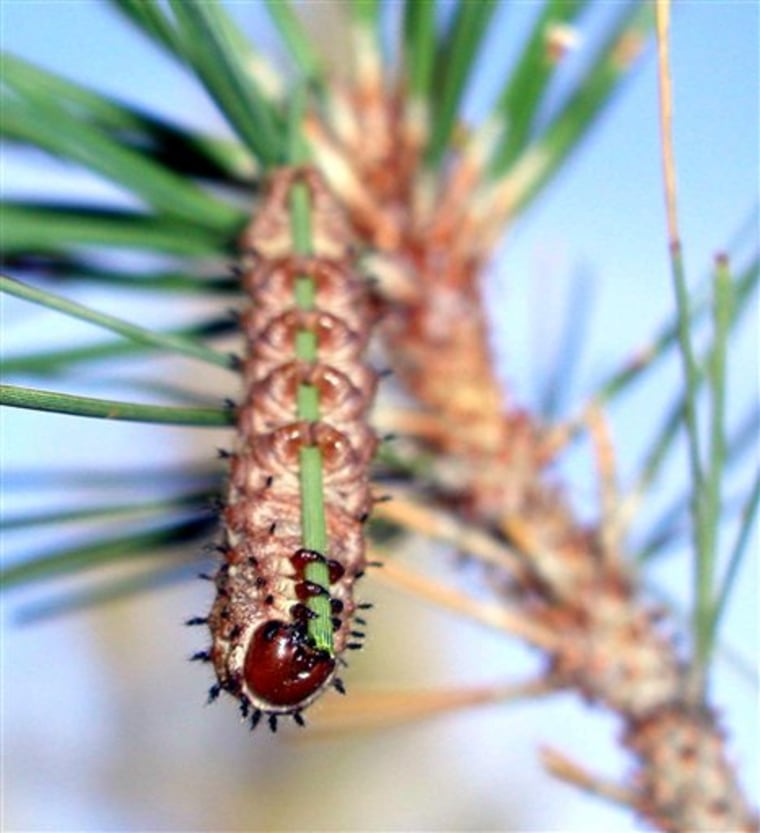Researchers have identified a "starter hormone" responsible for initiating the process by which caterpillars transform themselves into moths.
The researchers also discovered that by manipulating hormone treatments, they could arrest a caterpillar's growth, a finding they suggest will lead to a better understanding of how hormones can control growth in humans.
The research by David Champlin, a biology professor at the University of Southern Maine, and a team of students and colleagues at the University of Southern Maine appears in Friday's issue of the journal Science.
Champlin likened the newly identified hormone — called metamorphosis initiating factor — to the starter motor in a car.
"With the caterpillar, many scientists have studied a hormone that causes metamorphosis to advance and another hormone that represses metamorphosis, but have never really asked what starts metamorphosis. When we did we found a new role for the repressor hormone and in the process identified a hormone never before known that starts metamorphosis," he said.
Researchers said the implications of their work go well beyond the control of caterpillars that eat tomato plants. They suggest that their findings could be of value in such areas as development of anti-cancer agents and understanding the long-term effects of infant malnutrition.
The study found that metamorphosis initiating factor is regulated by nutritional cues in the caterpillar's food.
By manipulating the caterpillar's diet, researchers could create strange chimeras that were part caterpillar and part pupa. For example, the chimeras had caterpillar mouths for plant chomping and also the nectar-sipping mouth tubes of the moth. Development of the antennae, legs and eyes were also caught midway between what the caterpillar needs to survive and what a moth needs.
The chimeras were unable to eat properly and thus could not survive. But researchers were able to describe in detail the relationship between the cells that formed the caterpillar and those that will form the moth.
One finding was that the cells that formed the moth's eye were actually skin cells in the caterpillar.
"All of this is leading us to a better understanding of how hormones control growth in animals, including humans. This is also related to stem cell research and regenerative medicine — how to coax cells to change their fates," Champlin said.
Champlin, an assistant professor of biological sciences, was assisted by students Paul Allee of Portland and Steven MacWhinnie of Gray and three colleagues who are professors at the University of Washington and Hirosaki University in Japan.
The research was funded by the National Science Foundation and the Bioscience Research Institute of Southern Maine.
